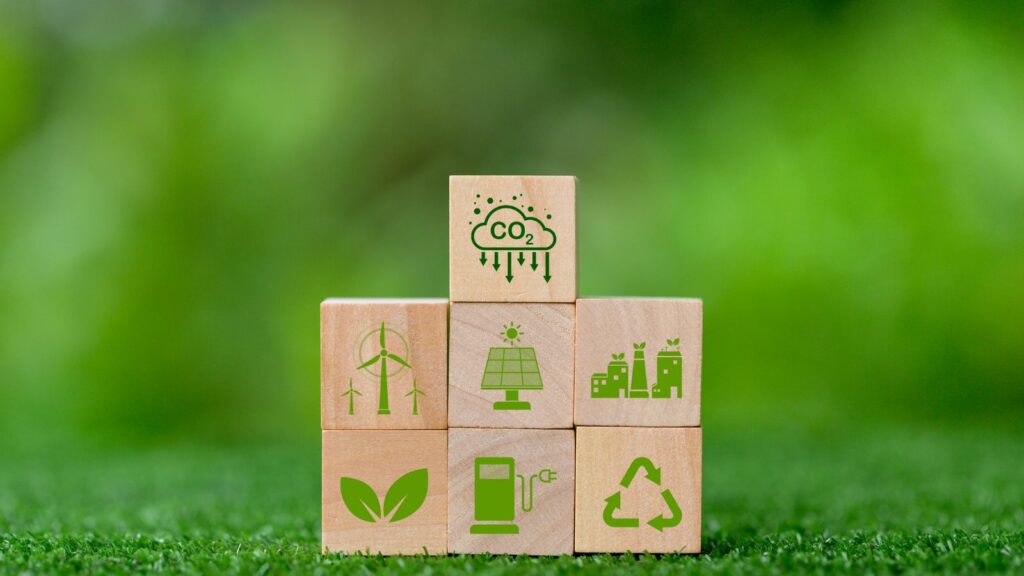In a world grappling with the impacts of climate change, carbon reduction projects have emerged as a crucial strategy in the global effort to curb greenhouse gas emissions. These initiatives, ranging from reforestation to renewable energy development, aim to reduce carbon footprints and promote sustainable practices.
Carbon Reduction Projects

Carbon reduction projects aim to decrease greenhouse gas emissions and mitigate climate change effects. These initiatives prioritize strategies like energy efficiency, renewable energy deployment, and carbon sequestration to minimize carbon footprints. By implementing these measures, they help achieve sustainable development goals and align with national and international environmental commitments.
- Energy Efficiency: Upgrades in infrastructure, technology, and practices reduce energy consumption. For example, modernizing buildings with energy-efficient lighting and heating systems cuts power usage significantly.
- Renewable Energy: Deployment of wind, solar, and hydroelectric power replaces fossil fuel reliance, reducing overall emissions. Solar panel installation at industrial sites offers a scalable example.
- Carbon Sequestration: Projects in afforestation or reforestation capture and store atmospheric carbon. Initiatives like planting native trees in deforested areas exemplify this strategy.
Regulatory frameworks and financial incentives support these projects, encouraging adoption and innovation within various sectors. Public and private partnerships also play a crucial role in scaling successful carbon reduction models. By understanding these elements, stakeholders can make informed decisions to contribute to global sustainability targets.
Types of Carbon Reduction Projects
Carbon reduction projects encompass diverse strategies focused on sustainable resource management and emissions reduction. These initiatives play a crucial role in achieving net-zero targets.
Renewable Energy Projects

Renewable energy projects harness natural resources to generate clean energy. They replace fossil fuels with sustainable alternatives like solar, wind, and hydroelectric power, reducing greenhouse gas emissions. For instance, solar farms in the Mojave Desert produce massive amounts of electricity, demonstrating potential scale. Offshore wind farms also illustrate advancements, contributing to energy grids with minimal ecological impact.
Energy Efficiency Projects
Energy efficiency projects optimize energy use in sectors like transportation and buildings. By upgrading to efficient lighting and heating systems, they significantly cut energy consumption. Energy Star-rated appliances, for instance, use up to 50% less energy than standard models. In transportation, transitioning to electric vehicles reduces carbon footprints by decreasing reliance on gasoline.
Reforestation and Afforestation Projects
Reforestation and afforestation projects aim to capture and store carbon dioxide through tree planting. These initiatives convert deforested areas into carbon sinks. In the Amazon, reforestation efforts restore landscapes and enhance biodiversity. Urban afforestation projects, like those in New York City, increase green cover and improve air quality, benefiting local communities and ecosystems.
Benefits of Carbon Reduction Projects
Carbon reduction projects offer significant advantages across multiple dimensions. These initiatives not only mitigate climate change but also stimulate economic growth and enhance social well-being.
Environmental Impact
Carbon reduction projects play a crucial role in minimizing greenhouse gas emissions. By deploying renewable energy sources like wind and solar, they reduce reliance on fossil fuels. Reforestation efforts restore ecosystems and capture atmospheric carbon dioxide. Improved energy efficiency lowers overall energy demand, decreasing environmental strain. Projects also promote biodiversity by protecting habitats and fostering ecosystem resilience.
Economic Advantages

These endeavors deliver notable economic benefits. Worldwide, renewable energy projects generate employment opportunities, particularly in manufacturing, installation, and maintenance. They drive innovation in technology sectors and reduce energy costs for businesses over time. Reforestation initiatives often support local economies by creating jobs in land management and conservation. Public and private investments in these projects can stimulate growth and enhance competitiveness in the global economy.
Social Benefits
Carbon reduction projects improve community living standards. Local engagement in reforestation and energy efficiency programs fosters a sense of inclusion and responsibility. Improved air quality from reduced emissions contributes to public health, decreasing healthcare costs. Educational outreach and participation empower communities to pursue sustainability goals. By enhancing infrastructure, these projects build resilience against climate-related disruptions, ultimately strengthening community ties.
Environmental Restoration
Carbon reduction projects are essential in the global fight against climate change. They offer a multifaceted approach to sustainability by integrating environmental restoration with economic and social benefits. By harnessing renewable energy, enhancing energy efficiency, and promoting reforestation, these initiatives pave the way for a more sustainable future.

